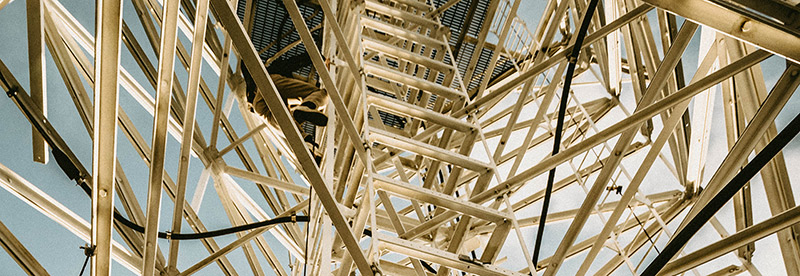Inspections and audits are an integral part of the quality control process for every successful organization. The supervisory nature of inspection helps ensure high quality standards. Ultimately, the act of inspection is paramount for successful project delivery. Today, in the modern digital era, an inspection can be utilized for far more than quality control, though. CloudVisit’s remote inspection software allows companies to capture audio/video recordings of completed work scope and store it indefinitely in the Cloud. Retention of this evidence can protect organizations from costly litigation and legal penalties in the long term.
There may be no end to the problems that can occur at a project site before, during or after a job is completed. Even the most careful companies can fall victim to the negligence of crewmembers resulting in property damage or safety hazards. Then there are external forces committing outright crimes like larceny and vandalism. Sometimes it seems like there is no way to prevent unfortunate circumstances from occurring in the first place. Of course, the reality is quite contrary to this sentiment. Quality control measures like careful and continuous inspection throughout the duration of a project can protect a company from falling prey to would be felons.

Ensuring Workplace Safety
Some companies utilize remote video inspections to ensure workplace safety. It can be extremely beneficial to go over safety standards at the beginning of every recorded inspection session with crew members. Using this procedure, you can ensure that proper safety equipment like harnesses, or fire extinguishers are in use by the crew members on the job site. It can also be useful to capture OSHA certifications for all members at hazardous locations. Recorded evidence like this can help to mitigate lawsuits resulting from workplace injuries. These recordings can also be presented to regulators proving that government standards are being adhered to on a problem site. This can all add up to long term cost savings.
Your crewmembers are also more apt to follow proper procedures themselves if they think they might be caught in a video recording doing something wrong. When crewmembers realize that video evidence of them breaking safety or installation best practices could potentially show up later jeopardizing their employment, they will follow procedure.
Retain Evidence to Prevent Legal Liability
Unfortunately, there are elements in society that take the easy way out. For some vandals and thieves, this can mean destroying your hard work after the project has been completed. It is not uncommon for thieves to break into locations and steal the components for new installations. Sometimes, it’s as simple as stealing copper plumbing or wiring to sell for scrap. Other times criminals can remove valuable electronic equipment. At the end of the day, your customer may try to deflect the cost by pointing the blame for any damage that occurred back at your company. In situations like this wouldn’t it be nice to have irrefutable proof that you left a job site in perfect order?
When conducting a virtual inspection, it is possible to record the final condition of the job site. Within CloudVisit’s platform, all recorded or photographic evidence can be stamped with date and time along with GPS coordinates. The date and time stamp provides irrefutable proof that prior to the crime, your team left the site in good standing. Furthermore, the GPS coordinates certify that the inspection was conducted at the same location that the damage or theft later occurred. In cases of severe damage, recorded walkthrough evidence can quickly deescalate potentially costly litigation.
There are numerous benefits to recording a video inspection. Ensuring that a construction crew has completed a job correctly is just one of them. Recordings of finished projects can help ensure that best practices and workplace safety policies are adhered to. Recorded inspection evidence can also minimize the impact of legal fees. These are just a few ways that maintaining recorded documentation of the final stage of a project site will save companies money by helping to ensure delivery of a high-quality product.

 Language:
Language:







